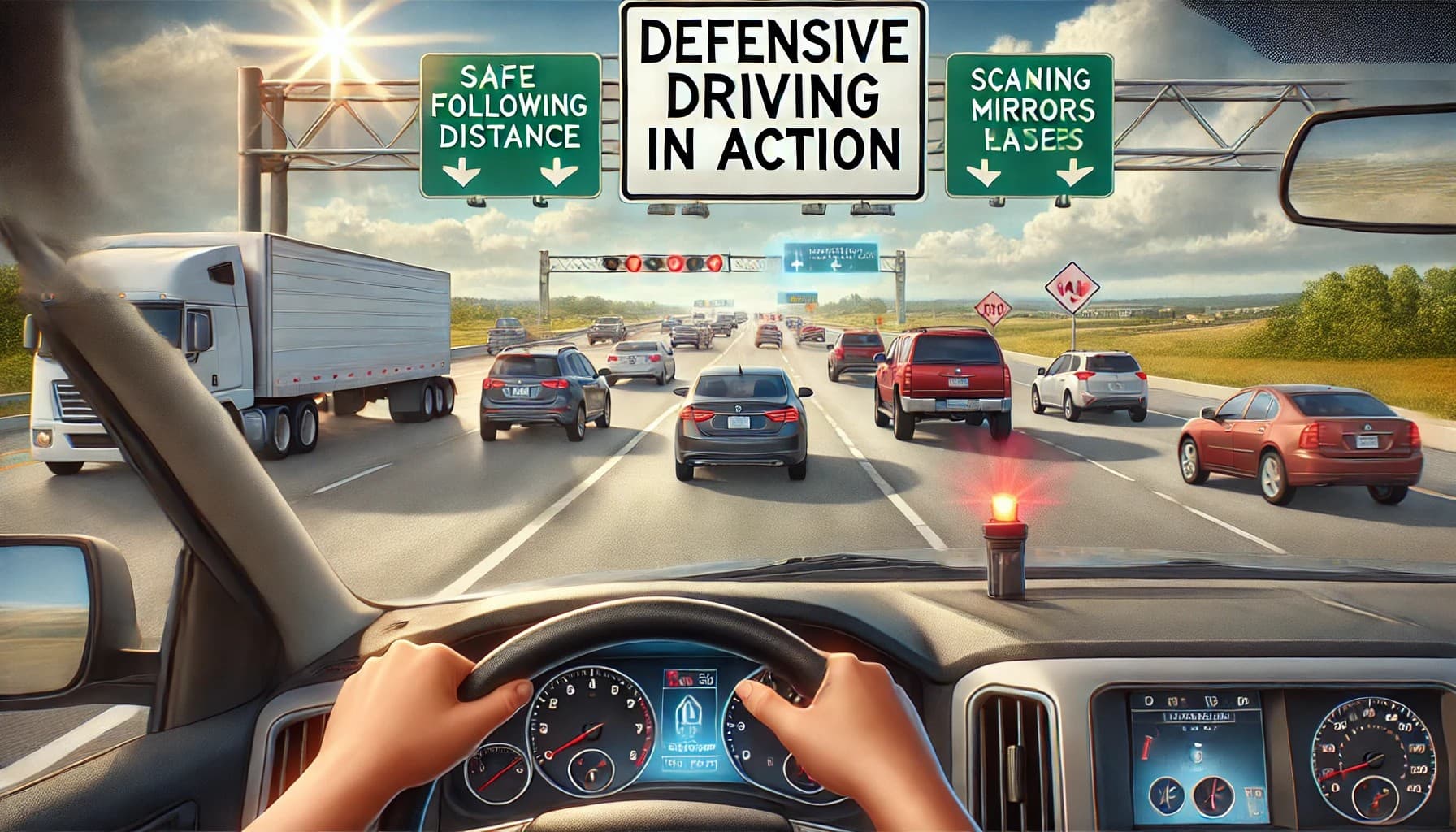Loading News Article...
We're loading the full news article for you. This includes the article content, images, author information, and related articles.
We're loading the full news article for you. This includes the article content, images, author information, and related articles.
Defensive driving is a powerful tool for staying safe on the road. This beginner’s guide explains the key principles of defensive driving, from staying alert and scanning your surroundings to maintaining a safe following distance and planning ahead.

Nairobi, Kenya – Driving in Kenya comes with its fair share of unpredictability—from sudden lane changes and boda bodas weaving through traffic, to unexpected pedestrians and matatus stopping without warning. That’s why defensive driving isn’t just a skill—it’s a mindset.
Whether you’re commuting to work or heading upcountry, here’s how to stay one step ahead of danger on the road.
Defensive driving starts with situational awareness.
🔄 Keep your eyes moving — scan the road ahead, behind, and around you
🔍 Check mirrors every 5–8 seconds
🚸 Watch out for hazards — merging traffic, sudden stops, pedestrians, potholes
🚨 Assume other drivers might make mistakes — and be ready to react
🧠 Think of it as driving with a sixth sense—anticipate before you react.
Tailgating is a common cause of avoidable accidents.
⏱️ Leave at least 2 seconds between you and the car in front
🌧️ In rain or bad weather? Double that to 4 seconds
🛑 If someone cuts you off, ease off the accelerator—don’t brake aggressively
🚗 The more space you leave, the more time you have to stop safely.
Defensive drivers don’t just go with the flow—they’re ready for emergencies.
🛣️ Keeping space to your sides whenever possible
👀 Identifying open spaces to steer into if things go wrong
🚗 Avoiding blind spots of large vehicles like buses and trucks
🚨 Always ask yourself: “Where would I go if the car ahead slammed on brakes right now?”
Just because “everyone does it” doesn’t make it safe.
🚫 No phone use — even hands-free calls can be distracting
📵 No texting, no scrolling, no filming TikToks while driving
🏁 Obey speed limits, especially in residential and school zones
🛑 Stop fully at stop signs, even when no one is watching
👮 Defensive driving is about doing the right thing—every time.
A defensive driver operates with caution, not blind faith.
🚗 Don’t assume a car will yield, even if they have a yield sign
🚶 Don’t expect pedestrians to use crosswalks
🚨 Don’t assume signal lights or indicators mean action
🤷 If it looks sketchy—it probably is
🔐 Stay humble, stay aware, stay in control.
|
Habit |
Why It Matters |
|---|---|
|
Scan mirrors constantly |
Spot hazards early |
|
Keep a safe following distance |
More time to react to sudden stops |
|
Identify escape routes |
Safer response to emergencies |
|
Stay out of blind spots |
Avoid unseen collisions |
|
Avoid distractions |
Full attention equals full control |
|
Obey traffic rules |
Lowers risk and builds better driving habits |
|
Expect other drivers’ mistakes |
Prepares you for the worst |
In Kenya’s busy and often unpredictable traffic, defensive driving is your greatest protection. It transforms you from a passive operator into an active guardian of your safety—and the safety of others.
💡 It’s not just how you drive. It’s how you think behind the wheel.
Keep the conversation in one place—threads here stay linked to the story and in the forums.
Other hot threads
E-sports and Gaming Community in Kenya
Active 6 months ago
Popular Recreational Activities Across Counties
Active 6 months ago
Investing in Youth Sports Development Programs
Active 6 months ago
The Role of Technology in Modern Agriculture (AgriTech)
Active 6 months ago